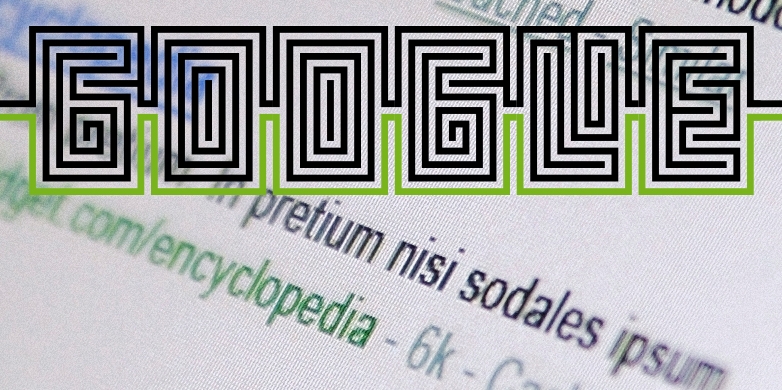Ways to escape the empirical nirvana
A law professor from ETH Zurich and an economist from MIT have been studying how a court ruling on the use of trademarks as keywords in Internet advertisements affects user behaviour – a case of big data with an interesting beginning and potential.
For Google, the small ads on the search results page are a lucrative business, for advertisers a major opportunity to catch the eye of potential customers. For trademark holders, however, they can be a real nuisance as advertisers do not just purchase the ad placement, but also keywords. These may contain trademarks, even if the trademarks do not belong to the advertisers themselves, which means that a sports shop can use the keyword “Adidas”, for instance, without actually owning the trademark rights. If an Internet user searches for the term “Adidas”, the sports shop’s ad appears on the right or above the list of the Google search results.
This wasn’t always the case. Just under five years ago, in March 2010, the Court of Justice of the European Union (CJEU) approved this practice in a ground-breaking ruling: it held that Google does not violate trademark law by using brands as keywords in its “Google AdWords” system. The court therefore drew a provisional line under the long, drawn-out legal disputes between trademark holders, Google and advertisers. There were similar disputes in many other countries, including the US and Australia.
Do looser regulations alter user behaviour?
As a result of this ruling, Google relaxed its own policy for the European mainland. Previously, the Internet giant had only tolerated trademarks as keywords in ads from the respective trademark holders, but not from other advertisers.
Exactly how the change in the Google AdWords policy affected the surfing behaviour of consumers, however, remained unclear. Trademark holders argued that they had been at a disadvantage since 2010 as the users’ attention was no longer drawn to their own ads, but rather ads from rival companies, which constituted an unfair exploitation of the trademark holders’ legitimate interests.
Consequently, Stefan Bechtold, professor of intellectual property law from ETH Zurich, and his American colleague Catherine Tucker from the Sloan School of Management at MIT examined the question of how the change in Google’s policy affected the behaviour of Internet users. They have just published the results of their study in the Journal of Empirical Legal Studies.
Visitor traffic barely down on trademark pages
Based on anonymous click-stream data for 5.3 million website visits by around 20,000 German and French Internet users before and after the policy change, the researchers investigated whether there was a difference in their search and surfing behaviour. The data included internet usage that began with a search engine such as Google or Bing and continued according to the search terms entered. For their analysis, the researchers discarded surfing data that lasted longer than ten minutes from the beginning of a search request.
The evaluation of the Internet data revealed that, overall, the change in Google’s policy did not have a significant impact in favour or to the disadvantage of the trademark holders’ websites. “On balance, hardly anything changed in the traffic on these pages,” stresses Bechtold.
Targeted searches less rewarding
Beneath the calm surface of the sea of data, however, we see a very different picture. After the amendment to Google’s policy, it became more difficult for users who searched specifically for trademark websites to reach them with trademark search terms. The probability of surfers reaching the websites of trademark holders using this kind of navigational search dropped by 9.2 per cent after the new policy came into force. In the case of a navigational search, Internet users enter keywords in the search engine with the aim of reaching the trademark holder’s website directly. “It’s worse for brands if the direct traffic on their websites drops,” says Bechtold.
Nevertheless, the law professor and his economist co-author also discovered a compensatory mechanism: it has become 14.7 per cent more likely for users to reach the websites of trademark holders with non-specific, so-called “non-navigational” searches after the change in Google’s policy. The non-navigational searchers therefore compensate for the “loss” of navigational searchers, especially because the number of non-navigational searchers is significantly higher than that of their navigational counterparts. “The effect is most evident for less well-known brands,” adds the ETH Zurich professor. With non-navigational searches using a trademark term, surfers access general information on a topic, including competitor products, independent repair services, spare parts, sales outlets or price comparisons. In this instance, the brand name is merely used as a proxy or search aid
First big data applications in trademark law
Bechtold and Tucker have entered uncharted territory with their study. “This is one of the first applications for big data in trademark law,” beams Bechtold. Internet data is a valuable source of information to study consumer behaviour, for instance. It can be used to develop recommendations for legislators and courts based on empirical data. “In many areas of innovation research, there is still a lack of reliable data that can be used to study the impact of legal rules on companies, consumers and markets.”
Their study reveals how we can escape from this empirical nirvana via interdisciplinary projects at the interface between law, economics and data science. “By adopting such approaches, hopefully more evidence-based legal decisions can be made in intellectual property law in future,” says the professor.
Literature reference
Bechtold S, Tucker C. Trademarks, Triggers and Online Search. Journal of Empirical Legal Studies, 2014. 11: 718-750, doi: external page10.1111/jels.12054call_made

